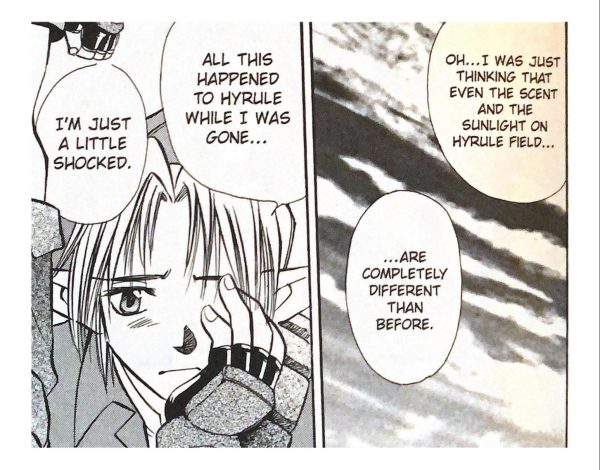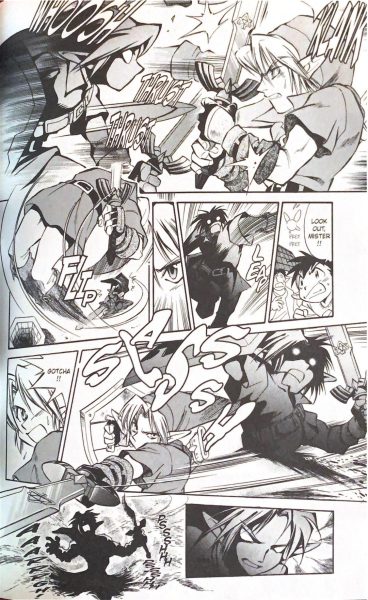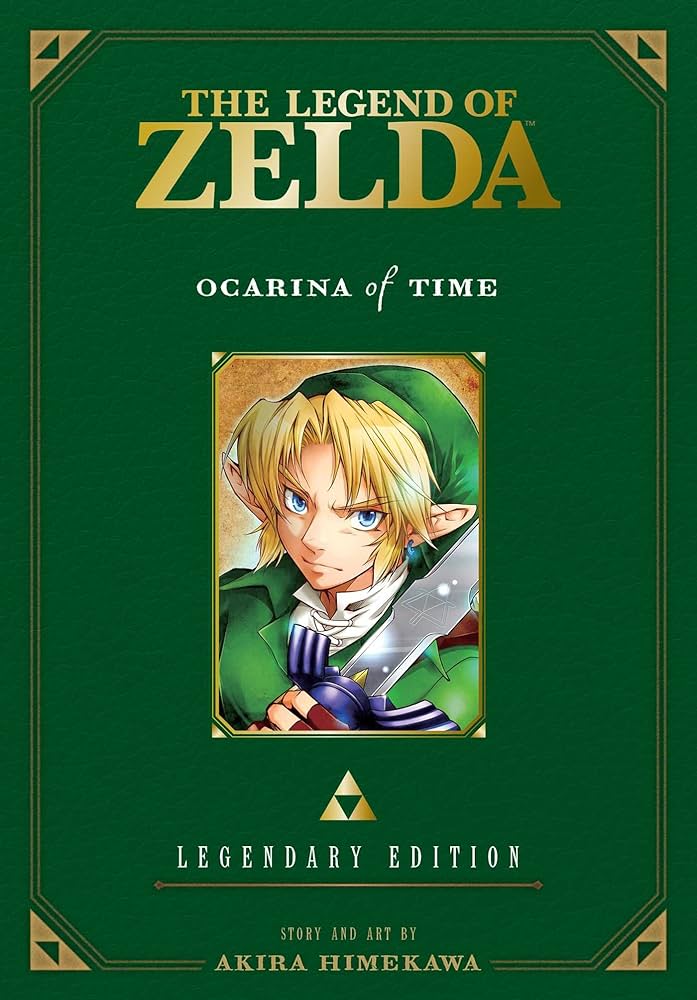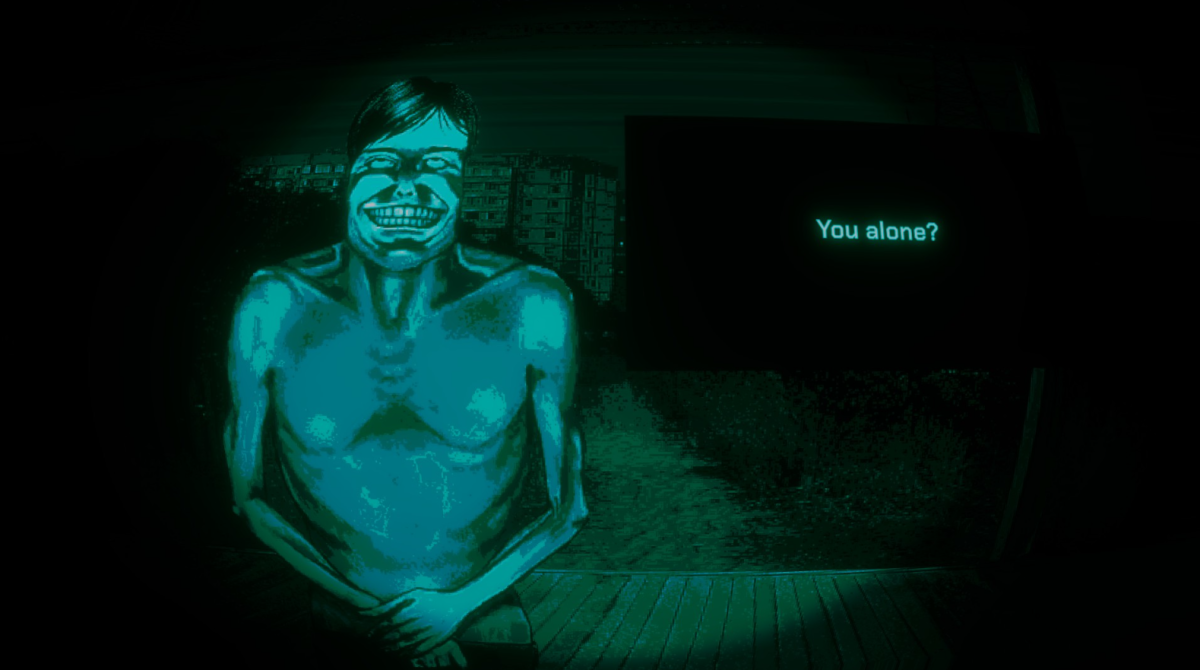While looking for ideas regarding new relaxing activities to do before bed via the internet, I came across a manga adaptation of the classic video game “Zelda: Ocarina of Time” written and illustrated by an artist duo who write under the pen name, Akira Himekawa. The illustrations seemed charming, and the idea of seeing the thoughts and dialogue of the protagonist, Link, that are otherwise absent in the original game intrigued me. As an enjoyer of both manga and “Zelda,” I decided to purchase a copy of the manga’s “Legendary Edition,” which combines the two volumes it is composed of into one single book and features full-color illustrations in the first few pages.
I found the manga as a whole to be an excellent retelling and reimagining of the basic plot of “Ocarina of Time” and ideal for readers of various backgrounds, whether they have played the original game prior or are unfamiliar with “Zelda.” The manga includes many creative touches by the authors not present in the original source material such as altering the actions and arcs of certain characters, most of which add to the reader’s experience.
The manga places further emphasis on the original game’s themes of maturity, innocence, the passage of time and memory in many ways.
The first half of the manga, in which Link is a child, takes on a slightly lighthearted tone through humorous panels and Link’s yearning for adventure while he is still unaware of the dire circumstances that await him.
The latter half of the manga, in which Link is an adult, takes on a comparably more serious and darker atmosphere, as greater challenges are posed to him. He is tasked with conquering enemies that are much more menacing while struggling to internalize the fact that so much has changed for the worse during his seven-year slumber. The way Link is characterized through his dialogue, actions and emotions also adds to the thematic weight of the manga. Though he can be a bit sassy at times, Link is ambitious, gallant, and won’t stop at anything to see justice prevail, making readers connect to him through the struggles he endures as a hero answering the call of destiny.

Alongside Link, I appreciate the way Akira Himekawa took the time to characterize other characters in the story and allow them to contribute to the progression of the plot, which I would argue is one thing the original game lacks. For instance, the authors took ample time to develop the relationship between Link and Princess Zelda, having the two interact in a way where the reader sympathizes with Zelda and understands the motivation behind her actions on a deeper level.
I also truly admired the improved portrayal of other side characters such as Impa, Zelda’s bodyguard, who acts as Link’s rigid yet caring mentor at one point. Nabooru, a skilled thief and swordswoman, is rendered a zealous sidekick to Link, who aids him in battle after Link frees her from a brainwashing curse. I especially liked the characterization of Sheik, a mysterious “wanderer” in disguise whose dialogue slowly reveals his true identity in a way that maintains mystery yet still renders the ultimate revelation of his true identity as a shock to the reader (if the reader has never played the game before). He plays a comparably more dynamic role in the story than his game counterpart, having heartfelt conversations with Link and even challenging him to a duel later on, which was a treat to see in illustration form.
The art of the manga certainly adds to the reader’s experience as well. It retains the original costumes and basic hairstyles of nearly all the characters, while how facial features are drawn are unique to Himekawa’s art style. The most distinctive feature in their art style would have to be the way eyes are illustrated– they are made large and detailed with shinier textures, more so than the art style for the original game. The way action scenes are illustrated– namely Link’s intense battles against enemies– are dynamic and lively, enthralling the viewer so they may comprehend the significance of such scenes to the manga’s plot.

Despite all the manga’s strengths, it is not without fault.
I found the manga’s two “oneshots” or original, short, side stories in the manga involving the characters to be boring and not very relevant to the manga or its themes.
Sometimes the panel illustrations were not extremely well done in the sense that they felt incomplete— for instance, there’s a panel of Malon where she appears to not have a chin at all, making her appear visually distorted.
The backstory of Baby Volvagia seemed to me as though it was hurled at readers out of nowhere and would have been better if Volvagia had been featured earlier in the story; nonetheless, the saddening fate of Volvagia at the hands of a hesitant Link still brought me to tears— I suppose the fact that scene in particular aligned with the manga’s themes of maturity and the heartbreak and sacrifice that comes with growing up served as a redeeming quality that still allowed me to be emotionally moved.
My biggest issue by far with the manga was its depiction of the story’s ending, specifically Zelda’s dialogue with Link. She tells him “Heroes aren’t needed at times of peace,” a quote absent from the original source material, right after he saves all of Hyrule from Ganondorf’s tyranny and offers to assist in rebuilding Hyrule due to the destruction inflicted on it. This contradicted the benevolent and gentle demeanor she displayed throughout the entire course of the story and sadly took away from the ending of the manga feeling like a complete and satisfying conclusion.
It is possible that Zelda’s off-putting dialogue could be attributed to a poor translation from the original Japanese version of the manga and was not originally intended to come off as cold as loss of depth and meaning is frequent in the translation process, but I can not say for sure. Due to Zelda’s nonsensical words towards Link, I found myself having more mixed feelings about the manga upon having just finished reading it, feeling perplexed at Zelda’s seemingly insolent and ungrateful behavior at the end of the story.
In retrospect, however, I can testify that the manga is overall a good read. It offers a refreshing reiteration of an endearing and bittersweet coming-of-age story and even exceeds the original source material in terms of characterization.









